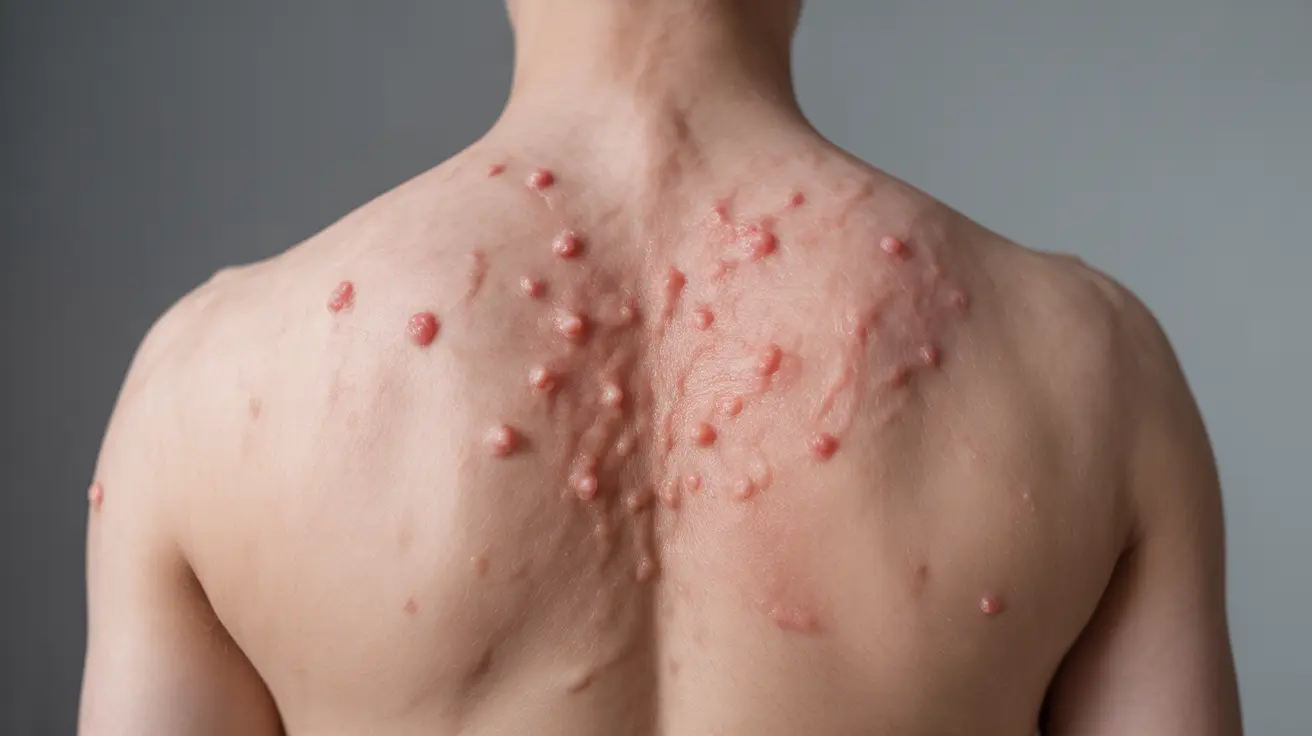The ketogenic diet has gained immense popularity for its weight loss benefits, but some individuals may experience an unexpected side effect known as keto rash. This inflammatory skin condition can occur when transitioning to a very low-carb diet, causing concern and discomfort for those affected.
While keto rash isn't dangerous, understanding its causes, symptoms, and treatment options is crucial for anyone following or considering a ketogenic lifestyle. This comprehensive guide will help you recognize, manage, and prevent this common ketogenic diet side effect.
What Is Keto Rash and Its Causes
Keto rash, medically known as prurigo pigmentosa, is an inflammatory skin condition that can develop when your body enters ketosis. The exact mechanism isn't fully understood, but researchers believe it's connected to the metabolic changes that occur when switching from carbohydrates to fat as your primary energy source.
Several factors may contribute to the development of keto rash:
- Rapid transition to ketosis
- Changes in gut bacteria
- Release of acetone through sweat
- Inflammatory response to ketones
- Nutrient deficiencies during diet transition
Identifying Keto Rash Symptoms
Keto rash typically presents with distinct characteristics that make it recognizable:
Initial Symptoms
- Red, itchy bumps (papules)
- Symmetrical patterns on both sides of the body
- Common locations: chest, back, and neck
- Web-like appearance of the rash
Progressive Stages
The rash often develops in stages:
- Light pink spots and itching
- Inflamed, raised bumps
- Network-like patterns
- Potential dark brown discoloration after healing
Treatment Options for Keto Rash
Several approaches can help manage and resolve keto rash:
Dietary Adjustments
- Temporarily increasing carbohydrate intake
- Gradual transition into ketosis
- Ensuring adequate nutrient intake
Medical Interventions
If dietary changes aren't sufficient, medical treatments may include:
- Anti-inflammatory creams
- Oral antibiotics (in severe cases)
- Antihistamines for itching relief
Prevention Strategies
Taking proactive steps can help minimize the risk of developing keto rash:
- Implement a gradual transition to ketosis
- Maintain proper hydration
- Support gut health with probiotics
- Ensure adequate mineral intake
- Keep skin clean and dry, especially after sweating
Long-Term Management
For those committed to maintaining a ketogenic lifestyle, long-term management strategies include:
- Regular skin monitoring
- Balanced nutrient intake
- Proper hygiene practices
- Stress management
- Regular exercise with appropriate post-workout care
Frequently Asked Questions
What causes keto rash and how is it related to the ketogenic diet? Keto rash is triggered by the body's transition into ketosis, where metabolic changes and the production of ketones can cause an inflammatory response in the skin. The exact mechanism isn't fully understood, but it's directly related to the metabolic state induced by a ketogenic diet.
What are the common symptoms and appearance of keto rash? Common symptoms include red, itchy bumps arranged in a symmetrical pattern, typically on the chest, back, and neck. The rash often appears in a web-like pattern and progresses through stages from pink spots to raised bumps.
How can keto rash be treated and managed effectively? Treatment options include temporarily increasing carbohydrate intake, using anti-inflammatory creams, taking oral antibiotics in severe cases, and ensuring proper nutrition. Many cases resolve with dietary adjustments and proper skin care.
Can keto rash be prevented while following a ketogenic diet? Yes, prevention strategies include transitioning gradually into ketosis, maintaining proper hydration, supporting gut health, and ensuring adequate nutrient intake. Proper hygiene and skin care are also essential preventive measures.
Why does keto rash sometimes leave dark skin discoloration after healing? The dark discoloration, known as post-inflammatory hyperpigmentation, occurs when inflammation triggers increased melanin production in the affected skin areas. This typically fades over time but may take several months to completely resolve.




